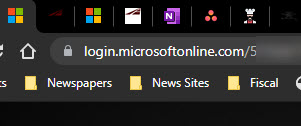Author: adaptiman
-
Because it’s there…
Fifty days from now, I will be retired and on a plane heading to Washington, DC to start a month-long trek on the Appalachian Trail. I’ve been hiking the AT for about 15 years now and covered a respectable portion of it. But I’ve never been gone for a month, and never by myself. The question is, “why would a 57 year-old fat guy want to sign up for that kind of deprivation? I’ve been asking myself that same question since I decided to go. While the real reasons are still a bit murky, there are three explanations which I think cover most of the “why.”
The first reason is physical. My current job does not afford me much exercise during the week. I sit (or stand) at my desk most of the day. While working from home has helped a lot by allowing me to move about a little – doing a load of laundry, feeding the chickens, checking the mail, I still struggle to exercise. I usually walk 2.25 miles each morning with the dogs “guarding” me the whole way. This helps but it’s not enough.
Diet is an area I’ve struggled with for years. While I can attribute some of it to the Staton genes, most of it is a lack of discipline, I’m afraid. I learned long ago that the only way to lose weight is to execute a combination of exercise and diet and make it a matter of habit. I can do the first, but have trouble with the second. This hike is going to be physically challenging for me, and I don’t know if I can make it. But if I do, I know that I will be thinner, fitter, and feel better about myself. I’m hoping that this will start me off on the right foot as I enter retirement.
The second reason is emotional. Most folks wouldn’t suspect it of me, but I’m greatly affected by news, politics, conflicts, wars, the economy, basically what’s going on around me. Right now the world is crazy, and I’m letting it get to me. I know from previous long-hike experiences that unplugging from society for an extended time has tremendous positive effects on your mental and emotional state. You see the world with different eyes after being on the trail for a few weeks. I need to unplug and reset my brain. This will allow me to properly prioritize the things that really matter to me – my wife and family, my professional goals, my eccentric hobbies.
The third and perhaps most important reason is spiritual. I’m studying to be a Deacon in the Catholic Church. Right now, I’m called an “Inquirer” which means I’m a nobody. The Inquirer phase lasts 18 months and is designed to examine you in every aspect of your life to see if you can potentially be a Deacon. It’s also a time to discern if God is calling. I think he is, but I’m not sure. So this hike will give me ample opportunity to talk to God and figure out if he really wants me to be a Deacon.
When George Mallory was asked why he wanted to climb Mount Everest, he famously replied, “Because it’s there.” I think that’s the short answer to my question. It focuses attention on the external object such as the mountain or the trail. But I’ll bet that Mallory did it for personal reasons as well.
-
The Bull is Dead.
I bet that got your attention. This is the first line from a well-known story that illustrates the difference between pyramid reporting, and inverted pyramid reporting. Pyramid reporting, also known as academic style reporting, is characterized by starting with a problem statement, elaborating on the background, discussing influencing factors and finally stating the conclusions. When the academic approach is used to give project status reports, people who are still awake for the punch line are silently praying, “Please! Kill me now!”
Contrast this with the inverted pyramid reporting style. In this formulation, the report which begins with the conclusion, followed by the most important facts and, finally, the details. A more engineering-oriented description of these steps, quoted from the article, would be;
1. Punch line: The facts; no adjectives, adverbs or modifiers. “Milestone 4 wasn’t hit on time, and we didn’t start Task 8 as planned.” Or, “Received charter approval as planned.”
2. Current status: How the punch-line statement affects the project. “Because of the missed milestone, the critical path has been delayed five days.”
3. Next steps: The solution, if any. “I will be able to make up three days during the next two weeks but will still be behind by two days.”
4. Explanation: The reason behind the punch line. “Two of the five days’ delay is due to late discovery of a hardware interface problem, and the remaining three days’ delay is due to being called to help the customer support staff for a production problem.”
We have all sat through reports that start with all the reasons why something did or didn’t happen. I think we should focus on the inverted style of reporting. It’s more efficient and keeps us sane, even if we have to kill the bull.

-
You want me to do WHAT?!?!
Nobody likes email retention, especially me. Believe me. No … really. Why on earth would I ask you, a productive researcher with no time for chit-chat, much less time to police your email, to spend time looking at your email, pondering it, and (hopefully) deleting a bunch of it? No sane person would do that.
As it turns out, email retention, while it can be painful, is actually a good thing, for you and for the agency. There are two main risk-related reasons to implement email retention.

Risk Reduction
First, email retention policies, “…are driven by the risk of TPIA requests, litigation subpoenas, and discovery requests, along with the requirement to eliminate transitory information and to properly maintain other state records,” says TAMUS General Counsel Brooks Moore, who is our System expert on this topic. “An automatic delete policy is a best practice,” he states. Furthermore, researchers that are reticent to implement email retention, “have [probably] not been involved in the voluminous email and document production from a number of TTI open records requests and discovery requests/subpoenas (guardrail litigation, etc.). In my experience, once a researcher has experienced this, they become an advocate for automatic delete policies.”
“An automatic delete policy is a best practice.”
Brooks Moore, TAMUS General CounselRetention Compliance
Second, retention of important information, i.e., state records, should not be maintained in email, “but should be retained in approved systems for electronic files and state records. An automatic delete policy encourages compliance with these requirements by forcing employees to properly file emails outside of email for continued preservation.” What are those approved systems? For TTI, OneDrive, mainly. On the flip-side of this argument, most emails are NOT considered state records, but transitory information. Transitory information should NOT be kept as it is not subject to records retention. Keeping it incurs risk as noted above.
Reducing risk and increasing retention compliance are a one-two punch that helps keep us safe and secure.
Related Links
-
NIS Strategic Plan Posted
NIS recently published an updated strategic plan. High-level objectives include:
- Move Toward a Cloud-First Environment
- Support Mobile-First Computing
- Support Research Computing
- Develop NIS Staff
- Mature IT Service Management Practices
-
Two Things To Do When Leading Change

I was browsing some articles on organizational change and came across this nice summary on Pink Elephant. The statistic that jumped out at me was that 70% of change initiatives fail. The article goes on to assert two main causes for these failures:
- The change is not started early enough, or is not well managed during execution
- People affected by the change are not sufficiently guided, and consequently don’t adopt or sustain the change
According to the article, “Many organizations focus on the first reason and totally ignore the second.” When I consider where IT needs work in leading change, #2 sticks out to me. So, how can I effectively guide the agency?
In my Technology Management Capstone course, one of the models I teach my students is John Kotter’s model of organizational change management, which is arguably the most famous model ever for leading an organization through change. Kotter’s book, Our Iceberg is Melting, is a classic in Industrial/Organizational Psychology. Kotter’s model consists of eight steps:
- Create a Sense of Urgency
- Build a Guiding Coalition
- Form a Strategic Vision and Initiatives
- Enlist a Volunteer Army
- Enable Action by Removing Barriers
- Generate Short-Term Wins
- Sustain Acceleration
- Institute Change
Notice that most of the work happens before the the change is instituted. Kotter’s steps are a good way to make sure that the organization has sufficient buy-in and sustainability to carry out the fast-paced changes we have to achieve in IT.
-
Hanlon’s Razor
I’ve been thinking a lot lately about Hanlon’s Razor. This adage states that one should never attribute to malice that which is adequately explained by stupidity. I would re-frame stupidity to be ignorance that results in poor communication. Indeed, most people, when kept in the dark about an issue that may affect them, tend to attribute nefarious intentions to the poor communicator. But I’ve found that rarely are the motives iniquitous. Rather, it is far more common for the communicator to simply not realize their messaging may be poor, their plans not communicated effectively, their intentions not transparent.
This is important in many fields of human endeavor, including IT. Followup communication on incidents and service requests frequently fall victim to time poverty on both sides, confusing written (i.e., email) responses, and technical jargon. While IT strives to improve in this area, I’m perturbed that sometimes it seems as if we make little headway to make our communication better and more transparent. It is a never-ending battle.
Happily, good communication and transparency can be taught – they are skills one may learn. Recognition of the psychological issues are the first step. Assessment, process, and practice are the methods to improve them.
So, the next time you’re in a poor communication situation, don’t assume the worst. Consider that the other may simply not realize that the message is unclear or has been lost.
Misunderstandings and lethargy perhaps produce more wrong in the world than deceit and malice do. At least the latter two are certainly rarer.
Goethe. J. W. (1774). The sorrows of young werther (as translated). -
Hackers Exploit Post-COVID Return to Work
As we return to the office, cyber threat actors are changing their tactics as they did during the work from home transition. Here at TTI, we’ve seen a number of these sophisticated attacks that attempt to redirect victims to a site to enter their credentials. But the site is NOT our Microsoft login site.
The latest scam includes pelting recipients with emails purportedly from their CIOs or other highly placed executive welcoming employees back into offices. Threat Post indicates that the fake CIO email prompts victims to link to a fake Microsoft SharePoint page with two company-branded documents, both outlining new business operations. However, if a victim decides to interact (click) on either document a login panel appears and prompts the recipient to provide login credentials to access the files.
What can I do to stay safe?
Whenever you enter credentials in a browser window, be sure that the address of the site is login.microsoftonline.com/… AND that there is a lock icon next to the address, like this:

When logging on, be sure that the address of the site is login.microsoftonline.com/…
